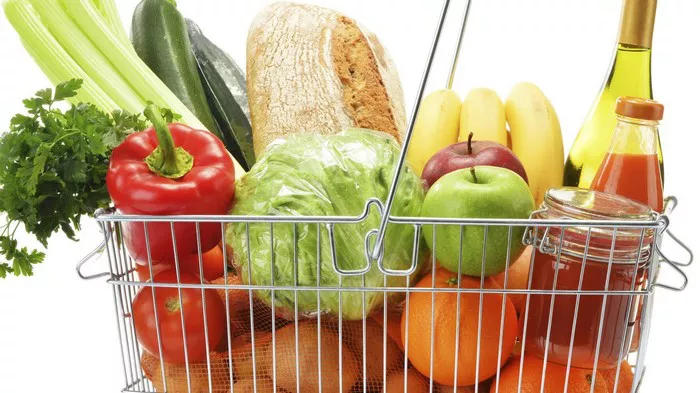Trans Fatty Acids, often abbreviated as TFAs, have earned a notorious reputation in the realm of nutrition. These artificial fats, created through the process of hydrogenation, have been linked to a plethora of health issues, including heart disease, diabetes, and inflammation. As we delve into the world of dietary choices, it becomes imperative to identify the common foods that harbor these detrimental components. This article aims to shed light on 10 prevalent culprits that contribute to the influx of Trans Fatty Acids into our diets, and how avoiding them can pave the way for a healthier lifestyle.
10 Common Foods With Trans Fatty Acids
1. Margarine and Vegetable Shortening
Margarine and vegetable shortening have long been considered healthier alternatives to butter due to their lower saturated fat content. However, the hydrogenation process employed to solidify vegetable oils and create these spreads leads to the formation of Trans Fatty Acids. These synthetic fats enhance the shelf life and texture of margarine but come at the cost of cardiovascular health. To make informed dietary choices, it’s crucial to scrutinize ingredient labels for partially hydrogenated oils, the telltale sign of Trans Fatty Acids lurking within.
2. Commercially Baked Goods
The delectable aroma of freshly baked goods often conceals a health hazard: Trans Fatty Acids. Commercially baked items such as cakes, cookies, and pastries frequently rely on partially hydrogenated oils to achieve the desired texture and shelf life. From your morning muffin to that tempting afternoon cookie, these treats may contribute to the accumulation of Trans Fatty Acids in your system. A discerning consumer should be wary of indulging in these baked delights without a thorough examination of their ingredient lists.
3. French Fries and Fried Foods
The crispy allure of French fries and other fried delights often masks their hidden danger – a significant Trans Fatty Acid content. Restaurants and fast-food establishments commonly use partially hydrogenated oils for deep frying due to their stability at high temperatures. Regular consumption of these fried offerings can elevate Trans Fatty Acid levels in the bloodstream, leading to adverse health outcomes. Opting for alternative cooking methods, such as baking or grilling, can mitigate this risk and foster a heart-healthy diet.
4. Microwave Popcorn
Microwave popcorn, a convenient and popular snack, can harbor an unexpected menace – Trans Fatty Acids. The lining of microwave popcorn bags often contains partially hydrogenated oils to enhance flavor and texture. As these oils break down during the cooking process, Trans Fatty Acids infiltrate the popcorn, turning a seemingly harmless snack into a potential health risk. Choosing air-popped popcorn or carefully scrutinizing ingredient labels for healthier alternatives can help minimize the intake of these harmful fats.
5. Frozen Pizza
Frozen pizza, a convenient go-to meal for many, may contain a substantial amount of Trans Fatty Acids. The desire for a crispy crust and extended shelf life often leads manufacturers to incorporate partially hydrogenated oils into the pizza dough and toppings. Regular consumption of frozen pizza contributes to the accumulation of these artificial fats, increasing the risk of cardiovascular issues. Opting for homemade or healthier store-bought pizza options can be a prudent choice to limit Trans Fatty Acid intake.
6. Non-Dairy Creamer
Non-dairy creamers, marketed as a convenient and lactose-free alternative to traditional cream, may hide a concerning secret – Trans Fatty Acids. Many of these creamers utilize partially hydrogenated oils to achieve a creamy texture and extended shelf life. Careful examination of ingredient labels is crucial for those seeking to avoid the health risks associated with Trans Fatty Acids. Opting for natural alternatives such as almond or coconut milk can provide a healthier and tastier alternative to non-dairy creamers.
7. Packaged Snack Foods
Packaged snack foods, ranging from crackers to chips, often contain hidden Trans Fatty Acids. The use of partially hydrogenated oils in the production of these convenient snacks enhances flavor, texture, and shelf life. Consumers should exercise caution and read labels diligently, avoiding products with these harmful fats. Opting for whole, unprocessed snacks like fruits, nuts, and seeds can offer a more wholesome alternative, reducing the risk of excessive Trans Fatty Acid intake.
8. Doughnuts
Doughnuts, beloved for their sugary allure and soft texture, are frequently prepared with partially hydrogenated oils. The desire for an indulgent treat with a prolonged shelf life makes these oils an appealing choice for doughnut makers. Regular consumption of these delectable pastries contributes to elevated Trans Fatty Acid levels, posing a threat to cardiovascular health. Limiting the intake of doughnuts or exploring healthier, homemade alternatives can help mitigate the risks associated with these harmful fats.
9. Crackers and Biscuits
Crackers and biscuits, often considered innocent accompaniments to various meals, can be stealthy carriers of Trans Fatty Acids. The use of partially hydrogenated oils in their production contributes to a desirable texture and extended shelf life. To make informed choices, consumers must scrutinize labels for the presence of these harmful fats. Opting for whole-grain or homemade alternatives can ensure a more health-conscious approach to snacking without compromising on taste.
10. Fast Food Burgers
Fast food burgers, a staple of modern convenience, can be laden with Trans Fatty Acids. The desire for a consistent taste, texture, and prolonged shelf life often leads fast-food establishments to use partially hydrogenated oils in their cooking processes. Regular consumption of these burgers contributes to an increased intake of artificial fats, heightening the risk of cardiovascular issues. Opting for healthier alternatives or homemade burgers allows individuals to enjoy this classic dish without compromising their health.
Conclusion
Trans Fatty Acids have infiltrated our diets through seemingly innocuous food choices, contributing to a myriad of health concerns. Recognizing the presence of these harmful fats in commonly consumed items is the first step towards making informed decisions about our dietary habits. By scrutinizing ingredient labels, opting for homemade alternatives, and choosing whole, unprocessed foods, we can reduce our exposure to Trans Fatty Acids and pave the way for a healthier, heart-conscious lifestyle. It’s time to be proactive about our food choices, ensuring that each bite takes us closer to well-being rather than unwittingly contributing to the hidden menace of Trans Fatty Acids.
















